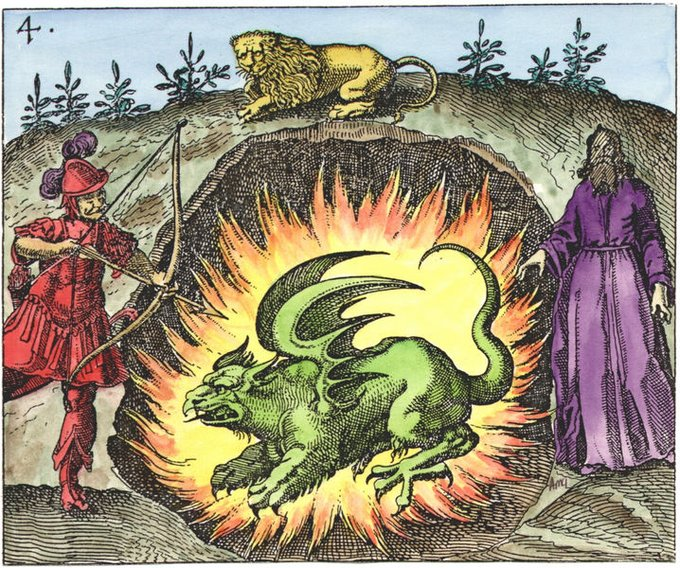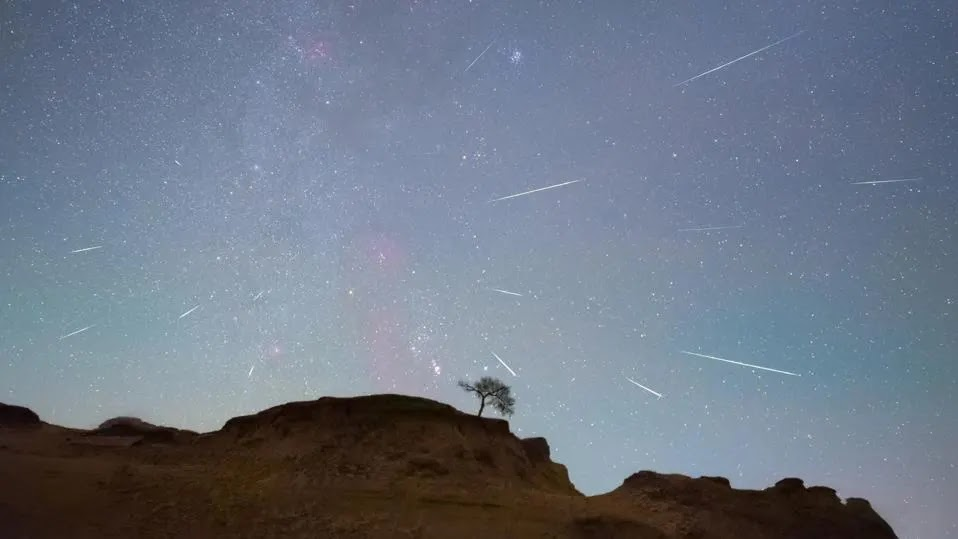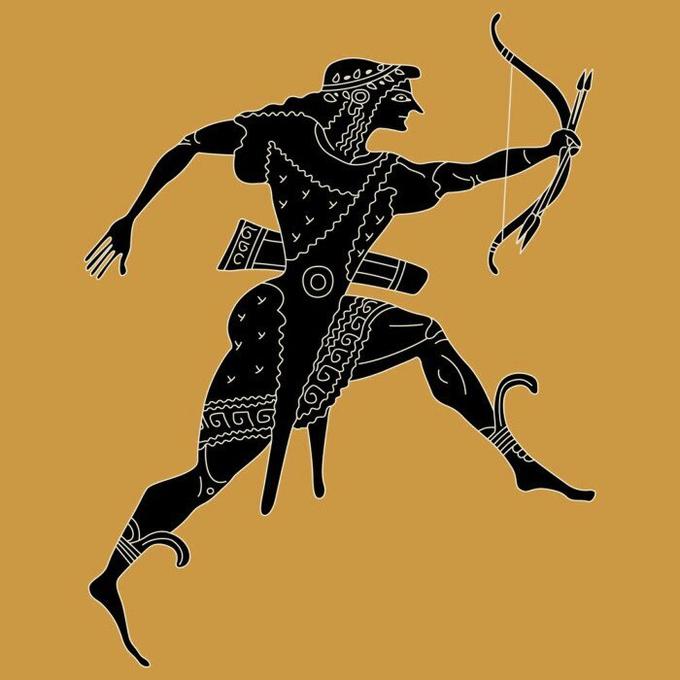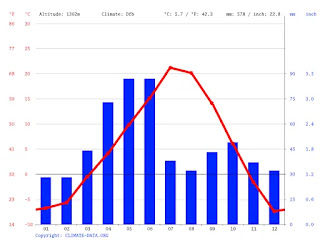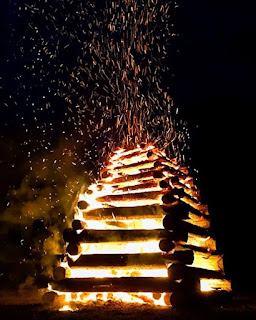"A savage Dragon lives in the forest, / Most venomous he is [...] / In the hour of his death / His venom becomes the great Medicine". Book of Lambspring 15 c...
Fiery (fire breathing) dragon, symbol of the destructive sun's heat during the hot, dry half of the year, which peaks in in Leo, Jul/Aug, the hottest and dries time of the year in continental Europe, Levant, Central Asia, Mesopotamia, Iran...
I talked about this dragon in Mesopotamia in my post "Seven headed dragon"...
In Mesopotamia, summer lasted seven (hot) months...Which is why local dragon (dragon = symbol of summer), had seven snake heads (snake = symbols of sun's heat)...Oh, and look, we also have dragon killer(s) and the princess 🙂
And in my posts "Angra Minyu", "The king killing Angra Mainyu", "Sacred hunt"...
And I talked about this dragon in Europe in my posts "Scaring off dragon", "Dragons always get killed", "Letnitsa treasure", "Dragon who stole rain", "The damned"
And I talked about this dragon in Central Asia in my posts: "Bactrian snakes and dragons".
In all these places, dragon always marks Jul/Aug, the hottest and driest time of the year...
Is the venom the water that dragon (drought) stole? Which gets released when dragon dies (drought ends) and the waters that dragon stole get released as rain and flowing water?
It is the main duty of all the thunder gods to kill the snake/dragon and release the waters the dragon stole...
So is the archer depicted pointing its arrow at the dragon a thunder god? This guy depicted here with a bow, killing the blazing sun that causes drought?
Until recently I would have been sure it was. In Fertile Crescent, where I think this fire breathing dragon mythology originated, the year is divided into two halves,
And right at the beginning of the rain season, lightning arrows start shooting from the night sky. Orionids....
And if arrows are shooting down from the night sky, there must be an [invisible] archer shooting them from up there. Orion...
I talked about this father of all thunder gods in my post "Invisible archer"...
But now I know that there are two Great Archers in the sky. One that shoots his arrows towards Earth in Oct/Nov (Orion), and the other one that shoots his arrows towards Earth in Jul/Aug (Perseus)...
I stumbled across this while I was writing my article "Apollo the great archer" about why Apollo was the terrible "far shooting" archer...About arrow and bow constellation from Mesopotamia, Ishtar, Sirius, and Jul/Aug, the season of Perseid meteor shower...
Question here, which I will try to answer soon: Did Mesopotamians see both Great Archers as one, just shooting at two different times of the year?
And the one which was in India called Rudra/Indra, the leader of the army of Rudras/Maruts armed with golden spears...I talked about this in my post "Rudra"...
And the one whom Greeks called Perseus...And Heracles...I talked about him in my post "Cetus"...
And the one whom Serbs call Ilija Gromovnik (Elijah the Thunderer), a very very strange saint celebrated in Jul/Aug...
Amazing picture. Elijah's Chariots of Fire, Byzantine Museum, Athens, Greece.
When I wrote my articles about him, "The thundering sun god", "Alidjun", "Zodiac killer", I already suspected that Elijah the Thunderer was not just simple replacement for Perun, Slavic thunder god. Like in Greece where he seem to have replaced Zeus, because most holy places associated with Elijah in Greece are mountain tops once associated with Zeus...
The reason why I thought that there was more to Elijah, is because Serbs believed that Every August 2nd, the hottest day of the year, Ilija Gromovnik (Elijah the Thunderer) is about to burn the world to ashes, but his sister/wife Ognjena Marija (Fiery Mary), another strange Serbian saint, persuades him not to do it.
This Russian "Christian" icon depicts Ognjena Marija or the "Fiery Mary" surrounded with fiery wheels of Perun, inside the burning flame.
This is why I called him The Thundering Sun God/Saint...But I couldn't fully make sense of him...
Then while I was writing my article "Croesus" I came across "Thundering Apollo" which sounded very similar to The Thundering Sun God/Saint from Serbian folklore...
It all finally made sense when I discovered the reason why Apollo was "the most feared archer"...
You should check my articles about Apollo if you want to fully understand what I am talking about here:
"Palil". About "Palil" a nickname of Nergal, the terrible, burning, destructive sun of Jul/Aug, Leo...And about the origin of the name Apollo and its meaning...
"Lord of the flies". About Nergal and Apollo as "The lords of the flies"...And about Jul/Aug, Leo, being the peak of the fly and fly born diseases season in Northern Hemisphere...
"Lions of Delos". About the Lions of Delos, the burning destructive sun in Jul/Aug, Leo, and the fact that both Nergal and Apollo are linked to lions.
"Apollo and dolphins". About Jul/Aug, Leo being the "best time to sail in Eastern Mediterranean", and the link between dolphins and Lions...and Apollo...
"Marble throne of Apollo". About snakes (symbols of sun's heat), dragons (symbols of burning sun's heat) and terrible sun gods, Nergal and Apollo who are dragons themselves...
"Apollo and Python". About why Python followed Apollo after his birth? Cause snakes are solar animals...According to the Delphian tradition, Apollo was born on the 7th day of the month of Bysios (Jan/Feb)
"White raven". About the black and white raven legend which is found in both Nergal and Apollo mythology, Egyptian vultures and the twins that guard the gates of hell. And some other weird stuff...
"Threshing floor of Apollo". About the threshing floors as solar observatories/temples, about the threshing floor of Apollo from Delphi, about Jul/Aug, Leo, being the holy month of Apollo, and about solar bonfires...
"Apollo the great archer". About why Apollo was the terrible "far shooting" archer...About arrow and bow constellation from Mesopotamia, Ishtar, Sirius, and Jul/Aug, the season of Perseid meteor shower...
"Apollo Sminthius". About Apollo and peak infectious diseases season, Jul/Aug
That's it. To read more about ancient animal and plant calendar markers, start here…Then check my twitter threads I still didn't convert to blog post...I am way way behind...
